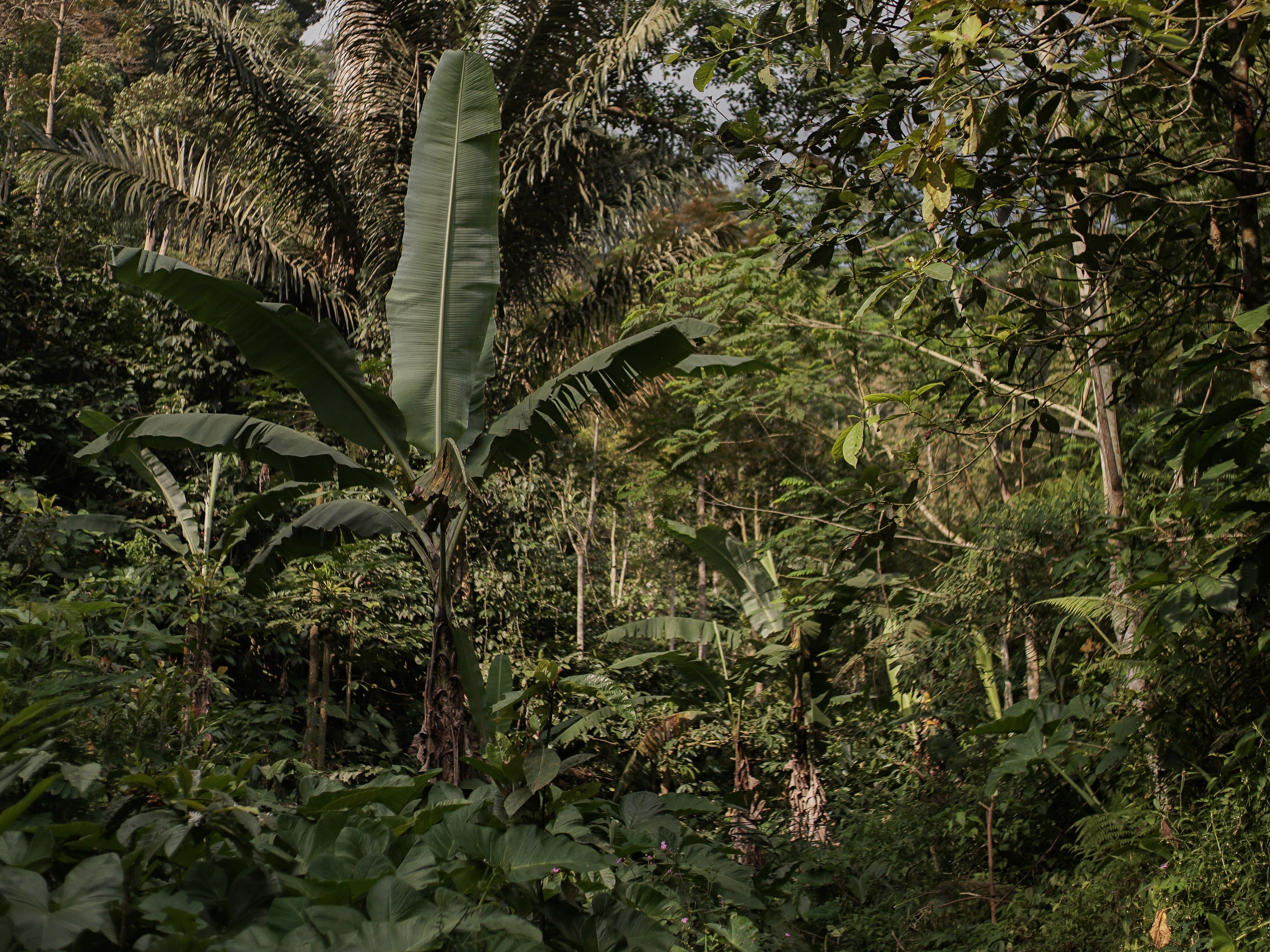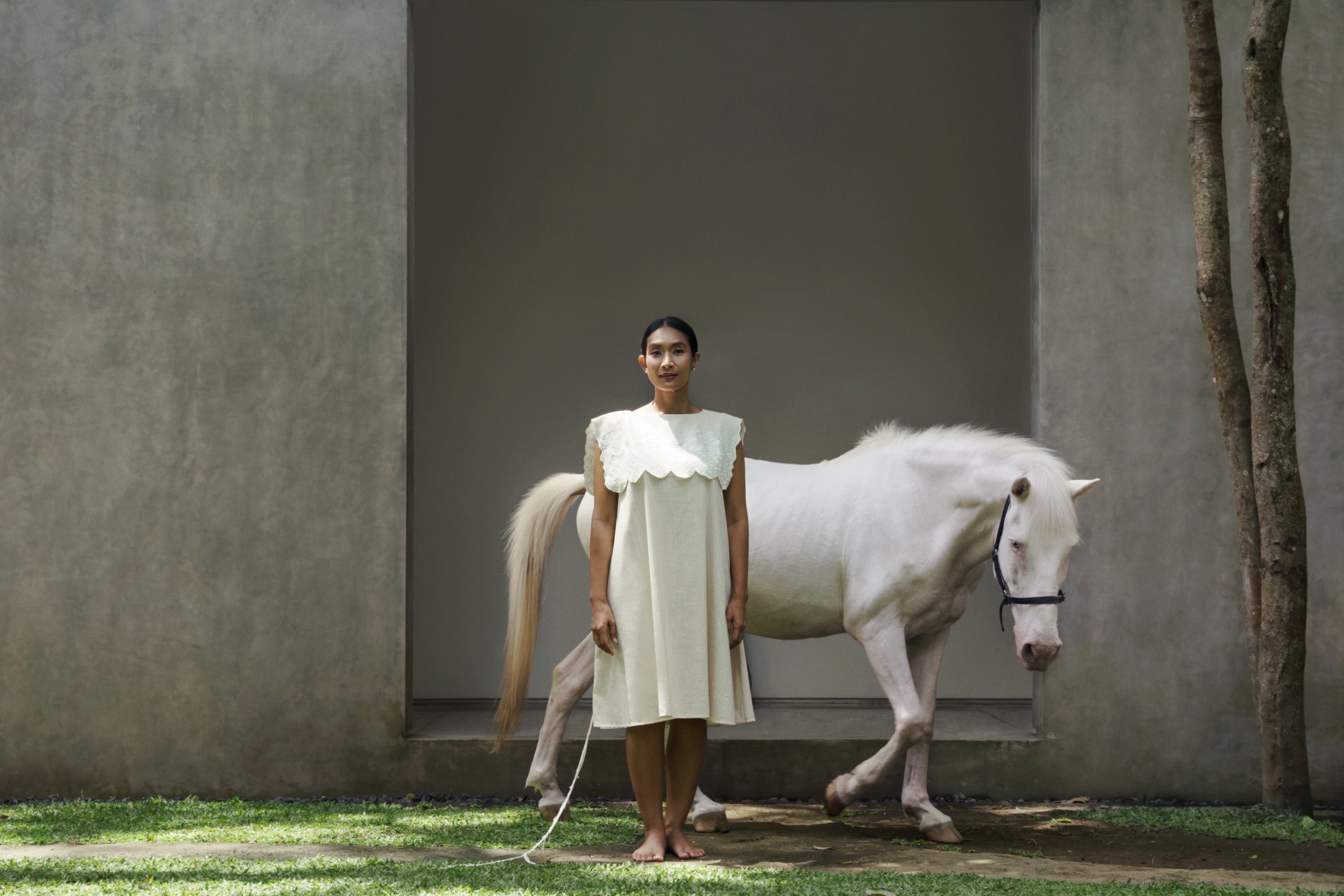
For generations, Sappan wood has been used in the Archipelago for its medicinal properties. This herbal medicine is believed to restore health through its natural protective abilities.
Through countless hours of research, ratios and recipes, we finally found a way to harness its natural power to create vibrant pinks and reds. Ensuring that our choice no longer comes at the cost of our only home.
Red: A lost natural color
Pink and red is the most difficult colors to obtain with natural dyeing. For years, we experimented with plants, from the obvious (dragon fruit, beetroots) to the unexpected (Morinda roots used commonly in Eastern Indonesia). But none succeeded, eliminated either because the color doesn't last - or because it's not locally available which increases the carbon footprint of the fabric.
For over 5 years, we've been experimenting with a particular wood that has been used as medicine here in Java over generations: Sappan. Only the most outer skin of the bark would be used. Sliced into thin strips and dried under the sun for 3 days before hot water would be poured into it - turning the water into a deep burgundy.

We chose this wood as it's locally available in our villages and its known health benefits. Its rich in Tannin, a naturally-derived chemical component that creates the red-hues in wood. Problem is, Tannin reacts in water above 100 degrees celcius – basically turning it from red to brick orange.
Without a way to stop the 'bleeding' of the tannin out of the fabric, there was no way we could create deep pinks and reds. Until we stumbled on another secret...
It all began with a warm plate of banana fritters
During one of our field trips, one of our Ibus fried some bananas from her garden for our afternoon snack. It was then that I learnt that banana trees can only grow fruits once. After that, it basically becomes just a stem; a waste in our food system – as it is usually not left to compose but burnt in the fields.

I got intrigued because seeing the sheer amount of banana trees in our villages, I was sure that there was something else we could do with them – turning their fibers into a new kind of fabric perhaps. But then, our research took another random turn: One day, our master dyer found his grandma cutting banana stem and rubbing it on her wound.. She later told me that they use that in the olden days because it helps wounds heal.
What about the banana stem was it that allowed wounds to heal faster and could this solve our Sappan dye issue? If it really had antiseptic properties, chemically speaking, it could be what we had been missing all along. My imaginary nerd tail went crazy with excitement – and into a rabbit hole of ratios, recipes, and research we go.
A natural innovation
We started experimenting with boiling banana stems that had been tossed aside – and tried using it as a mordant (the stuff that makes a dye stick to the fabric). And after many failed attempts, it finally happened: We had found the right rations so the fabric we were trialing emerged from the boiling water not as orange, but the most beautiful pink.
In 2020, we finally launched our Sakura pink.
It turns out that the waste of banana trees, apparently really rich in antiseptic, acts as a coating for the red tannin in the fabric. These unwanted stems protect the red from reacting with the high temperatures – ensuring the Tannin stays safe even through the boiling process.
Inspired by the beauty of spring, this hue represents the coming to life of the earth – from Petal to Blossom. Like a cycle of healing, a reminder of the beauty and fragility of the lives we share – now more than ever. I hope you'll enjoy its bloom. A cherished tradition best enjoyed with a cup of tea and a pause.
We didn't stop there. For years, our Ibus continued tweaking the recipes, trialling different drying methods in our search for deep reds. In 2023, we finally managed to push the craft further through our SappanPink, a rich, bright botanical pink that started conversations in climate conferences from the Earthshot Prize to COP28.


When you wear a SukkhaCitta piece, you're not just wearing clothes. You're wearing years of research. Each color a testament to our Ibus' eagerness to experiment and learning progress. Where no two would ever be the same. Thank you for choosing change.
Learn more about our climate positive dyes.





